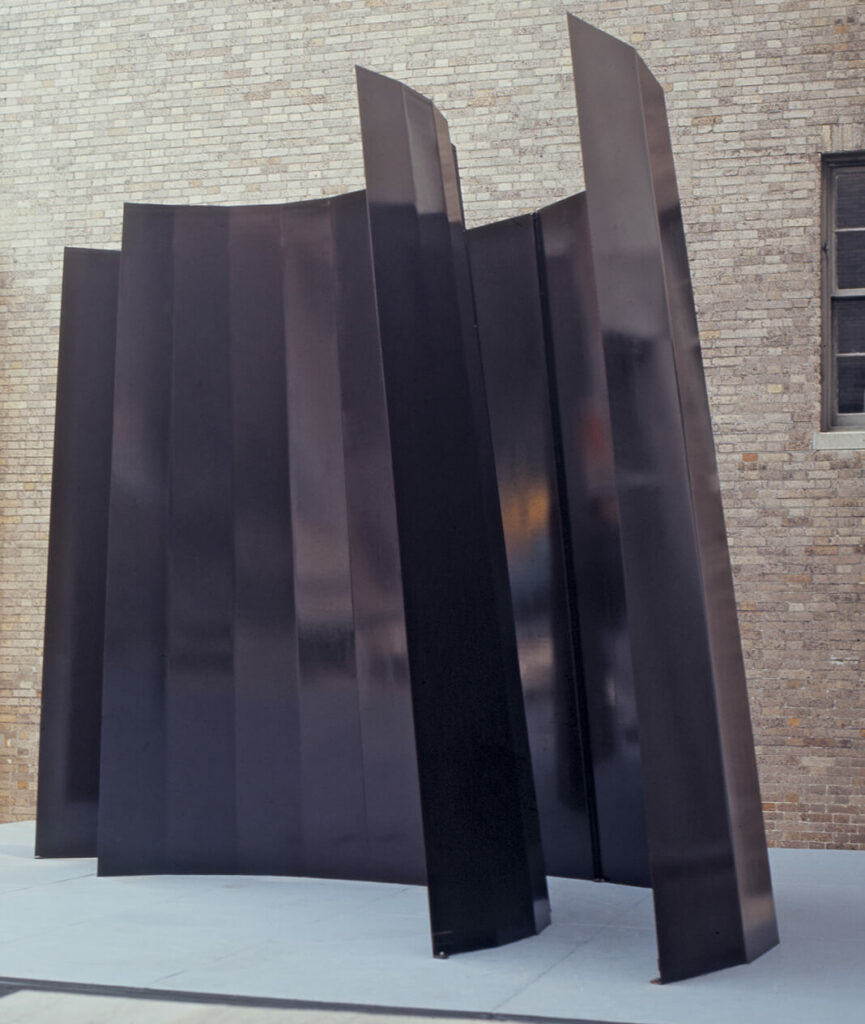A sense of mystery surrounds Athabasca, 1966–67, as its components become visible or invisible based on the viewer’s position in relation to it. Comprised of two curved walls separated by a close distance, visitors are able to enter and walk through the sculpture and experience different effects. For instance, when facing the convex side of the outer wall, the inner wall remains hidden, giving the sculpture the appearance of a monolithic object. Athabasca exemplifies the new range of forms and opportunities for creative experimentation that arose from Murray’s ongoing partnership with Lippincott, Inc., a Connecticut-based fabricator set up to work exclusively with artists. Although the work is painted dark brown, its faceted, smooth surfaces reflect light in different directions, producing a shimmering effect.
Mastery in Metal
-
Robert Murray, Athabasca, 1966–67
Painted Cor-Ten steel, 365.76 x 243.84 x 243.84 cm, Collection of Gallery Stratford. Athabasca installed at the Fifth Avenue entrance of the Jewish Museum in New York City for Sculpture in Environment, October 1967, photograph by Roxanne Everett/Lippincott’s, LLC.
